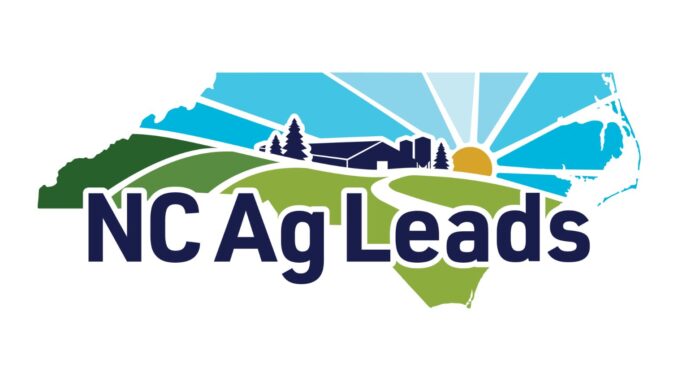
CARY — Last week regional and state agricultural leaders gathered for NC Ag Leads: Imagine Agriculture Day at the SAS campus in Cary, to talk about agriculture, challenges and how to move the industry forward.
Cris Coffin, National Ag Land Network Director and Senior Policy Advisor and Dr. Courtney Owens, Southeast Regional Director, both with American Farmland Trust were among the speakers who engaged participants in a thought-provoking conversation about the shrinking agricultural land base in North Carolina.
“We are doing a lot more work in the regenerative agriculture space and keeping farmers on the land because we understand that there is no farmland without farmers,” said Coffin. “We really believe that farmers and ranchers want to do right by their land and their businesses and that we just need to be helping to encourage and facilitate and support their work.”
Coffin shared that every state in the U.S. is losing farmland.
“We need to do something about it… let’s focus on building that capacity of folks around the country to be able to save land,” said Coffin, adding that this was not just about land protection but also about stabilizing the land base.
Owens shared that North Carolina is one of the states that has not passed the Uniform Partition Heirs’ Property Act, which helps farmers or the next generation “save their farmland,” and “prohibits the sale or partition of land.”
He explained that the south is the most threatened farmland in the country and North Carolina ranks number two in the group of states that have been identified.
“There are 3.9 million acres that could be at loss if nothing is done,” said Owens. “The breakdown goes to a million acres of land that can no longer [be used in] farming practice.”
Owens spoke about three future scenarios they have identified through their research: business as usual, runaway sprawl and better built cities.
“The business-as-usual model, is basically poor planning of agriculture and development and low density residential sprawl; The runaway model is the less efficient way of protecting farmland, and it also displaces farms… there’s larger lots of homes being developed in these rural areas, and so the farm that was once thriving and providing for communities, fresh fruits and local food, is no longer there,” he explained adding that the recommended scenario is the better built cities model, which emphasizes “planning for agriculture, planning around productive agricultural land, not bulldozing that land and taking it out of production.”
Data provided by Owens to Stanly County Journal shows that 46% of Stanly County’s conversion is projected to occur on the county’s best agricultural land according to the business-as-usual scenario. Statewide, 1,197,300 acres of farmland and rangeland will be converted to urban and highly developed and low-density residential land uses in the business-as-usual scenario.
Coffin and Owens emphasized the need for ag leaders to work together to protect the state’s farmland and help the farmers and future generation of farmers, because the choices that are made at the local, state and federal levels will have a tremendous impact on the future of agriculture and the land that sustains us.
Visit farmland.org for more.
